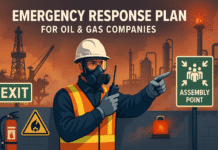
Hazardous Waste Classification Codes: Understanding, Significance, and Impact
Hazardous waste classification codes play a pivotal role in our environmental ecosystem, serving as a crucial framework for identifying and managing potentially harmful substances. Understanding these codes is not only a compliance necessity but also a fundamental aspect of responsible waste management.
Introduction to Hazardous Waste Classification
Hazardous waste encompasses materials that pose substantial risks to human health or the environment if improperly handled or disposed of. Within this context, classification codes serve as essential tools to categorize and manage such materials effectively.
Purpose of Hazardous Waste Classification Codes
These codes serve multifaceted purposes, primarily aiding regulatory compliance and facilitating accurate environmental impact assessments. They form the backbone of waste management practices, guiding organizations and authorities in the safe handling and disposal of hazardous materials.
Types of Hazardous Waste Classification Codes
There are various classification systems worldwide, including RCRA (Resource Conservation and Recovery Act), DOT (Department of Transportation), and UN (United Nations) codes. Each system has its unique structure and application.
Understanding RCRA Codes
RCRA codes, governed by the EPA, consist of alphanumeric combinations indicating specific characteristics and origins of hazardous waste. For instance, codes like D001 signify particular properties such as toxicity.
Insight into DOT Codes
DOT codes focus on transport regulations, employing numeric identifiers to classify hazardous materials based on their potential risks during transportation. These codes assist in safe packaging, labeling, and transport of hazardous substances.
Overview of UN Codes
UN codes provide a global classification system for hazardous materials, facilitating international trade and harmonizing the understanding of hazardous waste across borders.
Criteria for Classifying Hazardous Waste
Waste classification involves characteristics-based codes (focusing on specific properties of the waste) and listing-based codes (designating materials explicitly listed as hazardous).
Hazardous waste is classified using codes to indicate the type of waste it is. Here are some common hazardous waste classification codes:- F-Codes: Waste from common manufacturing and industrial processes, such as solvents and metals.
- K-Codes: Waste from specific industries, like wood preservation or petroleum refining.
- P-Codes: Acutely hazardous wastes, including unused chemicals and pharmaceuticals.
- U-Codes: Wastes that aren’t fitting into the above categories but are still hazardous.
These codes help in properly identifying, managing, and disposing of hazardous waste according to regulations.Benefits of Proper Hazardous Waste Classification
Accurate classification ensures proper handling, treatment, and disposal of hazardous waste, mitigating adverse environmental impacts and conferring legal compliance advantages to organizations.
Challenges and Limitations
Despite their importance, classification codes face challenges like ambiguous waste definitions and the emergence of new waste materials that might not fit existing categories.
Importance in Waste Management Practices
These codes significantly influence waste management strategies, impacting disposal methods, safety protocols, and overall environmental protection measures.
Conclusion
In conclusion, understanding hazardous waste classification codes is paramount for responsible waste management. Adhering to these codes not only ensures regulatory compliance but also safeguards our environment and public health.
Hazardous Waste Management System
How to Write Standard Operating Procedure
7 Steps of Standard Operating Procedure
FAQs
1. How often are hazardous waste classification codes updated? Hazardous waste classification codes undergo periodic revisions to accommodate evolving waste materials and scientific knowledge.
2. Are there penalties for improper classification of hazardous waste? Yes, improper classification can result in severe penalties due to regulatory non-compliance and potential environmental damage.
3. Can businesses use software to assist in hazardous waste classification? Certainly, there are numerous software solutions available that aid in accurately classifying hazardous waste materials.
4. What role do hazardous waste codes play in international trade? UN codes facilitate harmonized understanding and regulation of hazardous materials, easing their international trade.
5. Are there industries more prone to challenges in waste classification? Yes, certain industries dealing with complex or unique waste materials might face more classification challenges.
























